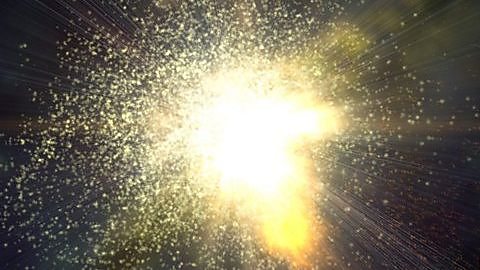100 years of general relativity
On 25 November 1915, Albert Einstein presented his general theory of relativity at the Prussian Academy of Sciences.
This theory is still considered to be the most important idea in modern physics. It rewrote Isaac Newton's physical laws devised 200 years earlier and created an elegant way to understand the Universe.
General relativity might have ushered in modern physics, but it was largely eclipsed by quantum mechanics in the mid 20th Century. Despite explaining astronomical phenomena far better, general relativity became deeply unfashionable, as it failed to explain what happens deep inside the atom.
Einstein’s big idea was the strange concept of space-time - the notion that space and time are woven together, and become distorted by objects with mass.
What is general relativity?
Ten years before general relativity, Einstein came up with special relativity, which explained the relationship between space and time – and how they are related to each other.
'Special' means ‘in certain circumstances’ – so not including the effect of gravity. It took Einstein 10 years to make the theory work for gravity too, which is how general relativity gets its name.
The theory is a series of equations defined by Einstein. These equations combine space and time to create space-time. Gravity is explained by these equations, which are consistent with what we see in reality.
Space-time
All three dimensions of space (height, width and breadth) are woven together with the idea of time to make up the fabric of the universe – space-time. Thinking in four dimensions is difficult, so space-time can be thought of as a rubber sheet. An object creates a dip in the sheet. If another object tries to move in a straight line on that curved surface it will now end up following a curved trajectory.
This is why the Earth goes around the Sun in a circular orbit rather than flying out of the Solar system in a straight line. Newton concluded the Earth’s movement was due to the force of gravity. But Einstein’s theory states that there is no force of gravity, it’s just the effect of our planet as it freely falls through curved space-time around the Sun.
Brian Cox and Robin Ince discuss the importance of relativity. The Infinite Monkey Cage (91»»±¨ Radio 4, 2015).
INTERACTIVE: Create a black hole
Below is a 2D representation of space-time. Anything with mass bends space-time – the heavier an object the more it bends. What we experience as gravity is caused by this bending of space-time. This is the main idea of general relativity and was summarised by the American physicist John Wheeler who said: "Matter tells space how to curve. Space tells matter how to move."
Drag the slider to increase the mass of an object and see the effect it has on space-time.
CLICKABLE: Why it still matters to physicists
Four familiar physicists – Brian Cox, Helen Czerski, Tara Shears and Jim Al-Khalili – explain why Einstein's theory of general relativity still matters to them.
Click or tap on the labels below to discover each physicist's example of why general relativity continues to help explain the Universe around us.
Learn more about this topic:
How will the Universe end? document
Dr Aravind Vijayaraghavan reveals how the second law of thermodynamics explains the rise and fall of all things, including the Universe itself.

What will the Large Hadron Collider discover next? document
The LHC has been upgraded and its energy has been doubled. New regions of physics can be probed but scientists are less certain what they are looking for.

How do we know the Big Bang actually happened? document
Most scientists think that everything that we know and experience began with the Big Bang, 14 billion years ago. But how can we have any clue about something that supposedly happened so long ago?
